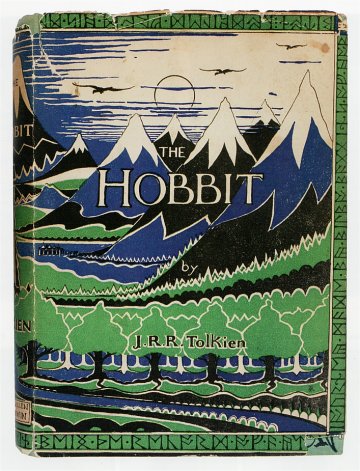

|
How To Describe FaultsHere's a frequently asked bookselling question: Are (book) auction catalogs worth anything? Sometimes yes, sometimes no, but I'd suggest that, before you put them up for sale, you examine them for their potential to help you learn more about the profession. Some, frankly, aren't of much use, but many of them are rich resources indeed that can teach you, among other things, how to describe faults and book elements, how to determine edition state and how to price books - all critical skills that inexperienced booksellers often come up short on. It's absolutely true that there's no substitute for experience in bookselling - handling books, buying and selling them, and so on - but there's also no substitute for education deliberately sought and obtained from other booksellers and bookselling references - studying, that is, about the profession independent of experiencing bookselling. Auction catalogs can help this latter cause hugely. In this and three following articles I'm going to use examples from catalogs to illustrate how you can do this without having to bare any ignorance in public forums. In other words, you can get book smart in the privacy of your own home! First, condition. I'm not going to discuss why it matters - Chris handles this topic very competently in the following article - but once you know how important it is, what then? It's easy enough to recognize faults in a book, but describing them accurately requires both a grasp of terminology and an ability to evaluate the severity of various types of damage - for example, at what point does "light bumping" jump cease to be light? Take a look at this book, which is exceptionally well illustrated in a recent Swann Galleries auction catalog:

How you would you describe this dust jacket? It might be instructive to give it a shot before looking at the following description: "278. TOLKIEN, J. R. R. The Hobbit or There and Back Again. Frontispiece and 9 other illustrations in black and white by Tolkien. 8vo, original green cloth, titles and pictorial decoration to spine and both boards in blue, cocked, some rubbing with slight surface loss at toot of spine, slight toning to edges; Thror's Map and Wilderland maps on endpapers, top edge stained green but faded; Tolkien-designed pictorial dust jacket, ½-inch chip at head of spine panel, creeping and widening to an inch at rear panel, 1/4-inch chip at foot, ½-inch chip at lower right corner of front panel, other short tears, most clean, some with residual chips; owner's inked inscription on front blank and signature on front map. "London: George Allen and Unwin, 1937 [8,000/12,000] "FIRST EDITION, FIRST IMPRESSION. FIRST ISSUE DUST JACKET With the ink strikethrough of the "e" in the misspelt "Dodgeson" on rear flap. The Hobbit was first conceived by Tolkien as a story to tell his children in 1926. He began writing the book in the late twenties to alleviate the boredom of correcting school papers. Only 1500 copies of the first edition were printed all of which were sold within a couple of months. Hammond and Anderson, A.3."
>>>>> Article continues on next page >>>>>
Questions or comments?
| Forum
| Store
| Publications
| BookLinks
| BookSearch
| BookTopics
| Archives
| Advertise
| AboutUs
| ContactUs
| Search Site
| Site Map
| Google Site Map
Store - Specials
| BookHunt
| BookShelf
| Gold Edition & BookThink's Quarterly Market Report
| DomainsForSale
| BookThinker newsletter - free
Copyright 2003-2011 by BookThink LLC
|

|
|